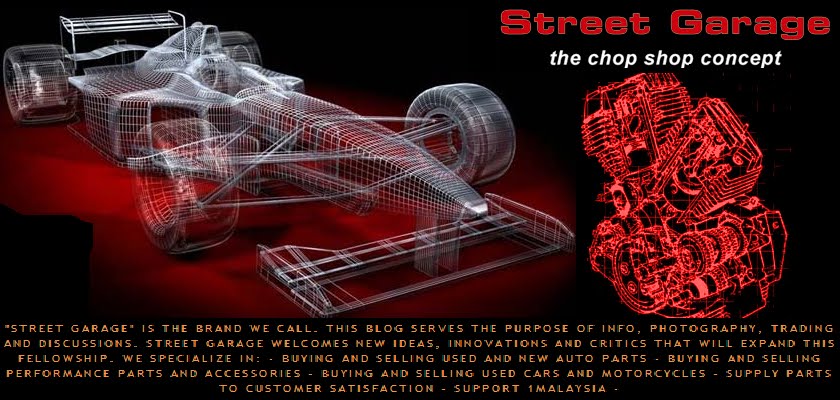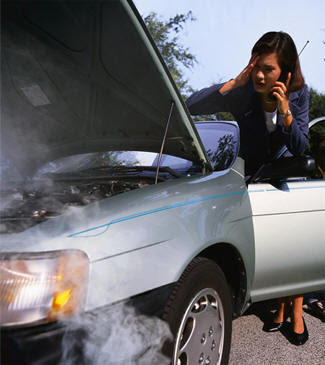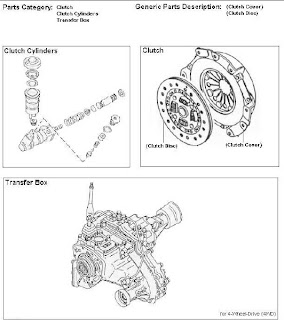Today's vehicles are much more complex and complicated than the cars of the 1960s, '70s, '80s, incorporating more computer electronics, silicon chips, and sophisticated engines. However, the same basic car care still applies to all kinds of vehicles, and can extend the life and durability of your car or truck.
The best part is, basic car care does not require any sophisticated understanding of vehicles or their systems. A few simple steps, some regular checks, and addressing issues promptly can greatly extend the life of your vehicle, making it safer and more dependable for you and your family.
Regular checks:
It may seem intimidating, but basic care car is often simply a matter of popping open the hood and taking a look at the engine of your vehicle.
Some basic car care starts with examining the exterior. Check your tires at least every other week to make sure they are inflated properly. This should be an actual check with a tire pressure gauge, but you may also advantage from a visual check to make sure the tires appear equally and properly inflated.
Other visual checks that require almost no vehicle mechanics knowledge include the following:
- body and bumper damage, which should be monitored for insurance purposes
- leaking fluids underneath the vehicle, including oil, power and brake fluid, transmission or other fluid (air-conditioning may cause water to drip under a vehicle)
- smoke in vehicle exhaust, aside from normal diesel emissions or startup fumes
- engine or fluid warning lights, which should be promptly addressed before any further driving
Under the Hood:
Of course, much of the day-to-day driving maintenance for your vehicle must occur with the hood opened and up, but that doesn't mean you have to be a mechanic. The most important things to monitor and check regularly include the following:
- engine oil level and cleanliness
- antifreeze/coolant level (never attempt to remove radiator cap while engine is hot or warm)
- brake and power steering fluid levels
- transmission fluid
- belts
When checking fluid levels, the engine usually has containers and canisters with fill-level lines. Make sure the fluids are above the minimum line, and below the maximum line. You should also keep an eye out for any leaks or worn radiator and other tubes, which should be replaced before pushed to the point of bursting.
Other things to be watchful for in and around the engine include loose electrical or tube connections, worn or exposed wires, and loose or warped belts, which should be promptly replaced. Belt replacement is somewhat difficult for some motorists, but is a relatively simple and inexpensive fix at a service station, so it may be worth the trip to your mechanic to get the right belt installed correctly.
You should also keep an eye on your vehicle's battery, and be aware of its age. Batteries should be replaced every five years or so, and if your battery is not getting the proper charge to easily start your car, you should have it checked. You can usually have your battery's charge and water level checked for free at a battery replacement station. Most vehicle batteries come with comprehensive warranties, as well.
Changing the Oil:
One of the most important things you can do to maintain your vehicle is to change the oil and oil filter regularly. Some mechanics recommend changing the oil every 2,000-3,000 miles, but you can safely drive further. However, you should be sure to change the oil of your vehicle, or have it changed, at least every 5,000, including a new filter.
Your oil should be relatively clean, but still have a dark color to it once it runs through your engine. You should regularly check your oil level, and maintain it between the minimum and maximum fill lines. This is why it is a good idea to have some motor oil with the vehicle so you will be able to add some if needed.
There are a variety of types of motor oil to choose from. Lighter weight oil, such as 5W-40, is typically better for warm to hot weather, while heavier oil, such as 10W-40, is more suited to colder temperatures and climates. If your vehicle smokes or uses a lot of oil, a heavier weight and synthetic blend motor oil is probably best.
Other Replacements and Maintenance:
Other important components and parts of your vehicle and engine that need regular maintenance and infrequent replacement include the following:
- air filter
- headlight, turn signals, and brake lamps
- spark plugs and cables
- engine timing belt
- windshield wipers
- Most engine tuneups are either actual motor work, or electrical tuneups consisting of spark plug, cable, and distributor cap replacement.
The biggest thing to remember with ongoing vehicle maintenance is to address issues promptly, including engine knocking or other noises, and do your best to try to understand what may be going on before you visit the mechanic.
Below are some illustration of the car body and major parts that might be useful for your better understanding
Braking
Cooling
Engine
Engine Electrical
Exhaust
Fuel
Steering
Suspension
Transaxle-Drivetrain 1
Transaxle-Drivetrain 2
Transmission_Clutch
Transmission_Gearbox


















3 comments:
Useful info/tips. Good job pardypeople!
Thanks mischa, looks like you're the only follower right now.
It is very important to know every single and simple detail about your car. Thanks for your post! It is really a great help.
Post a Comment